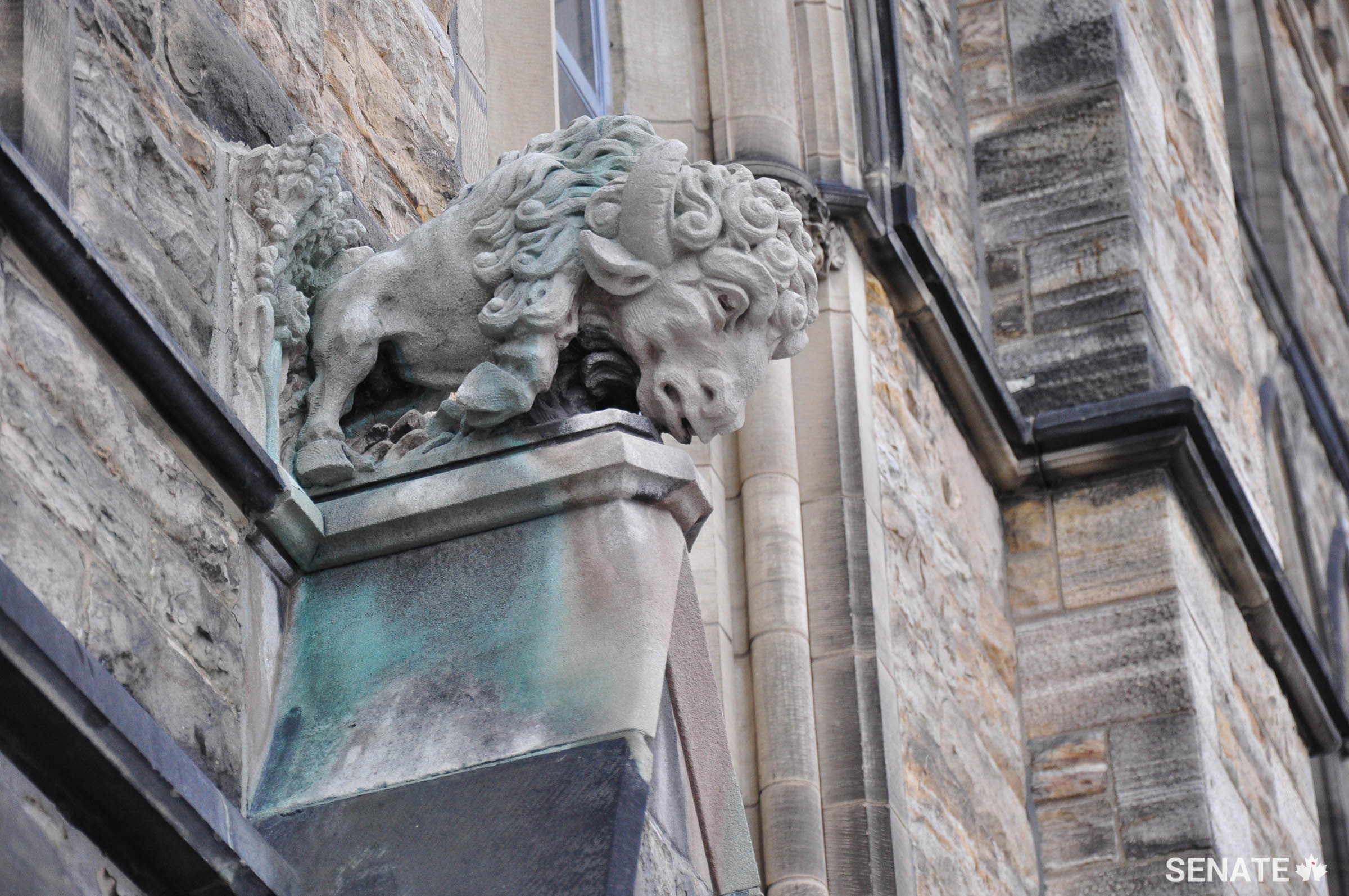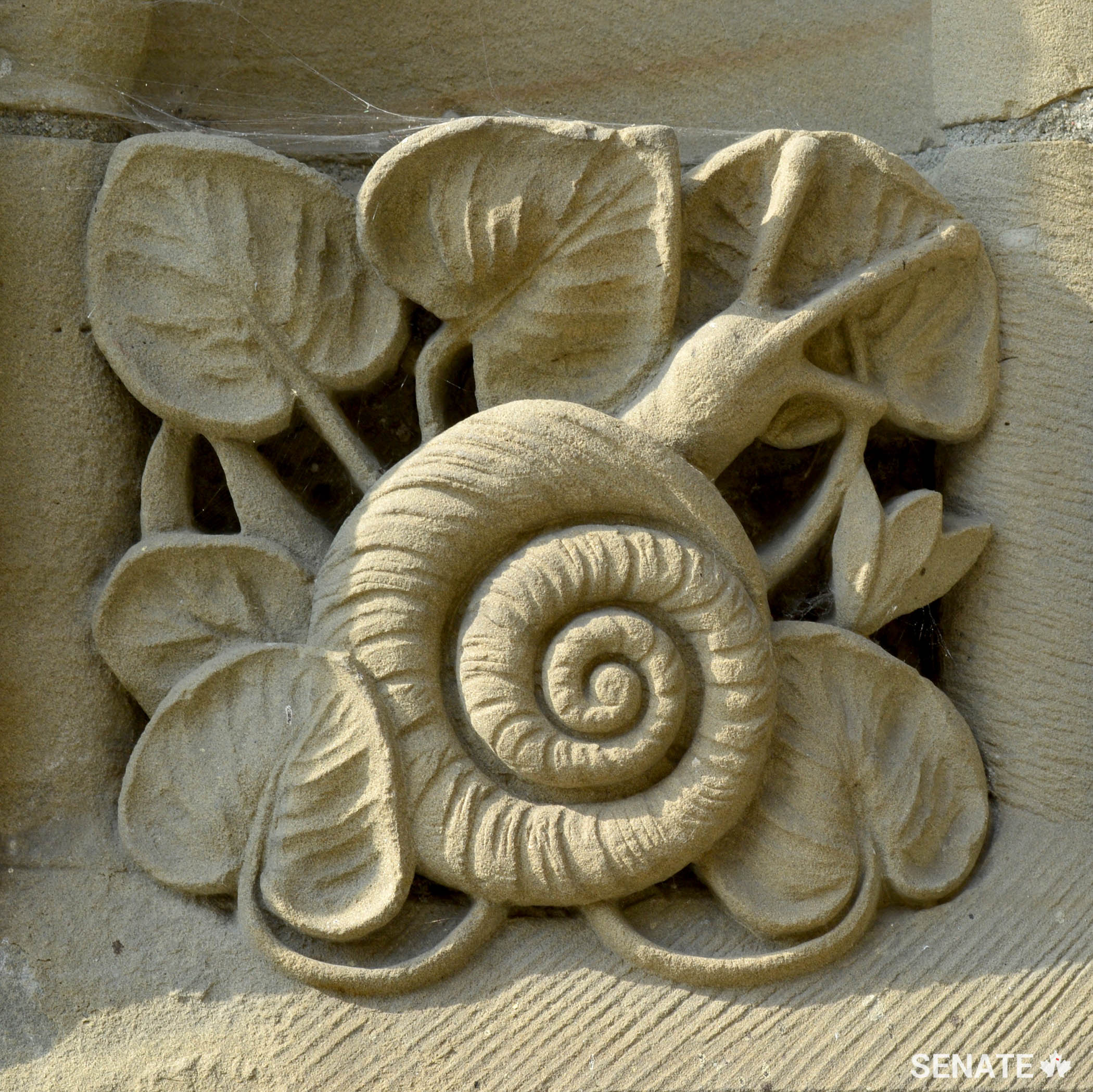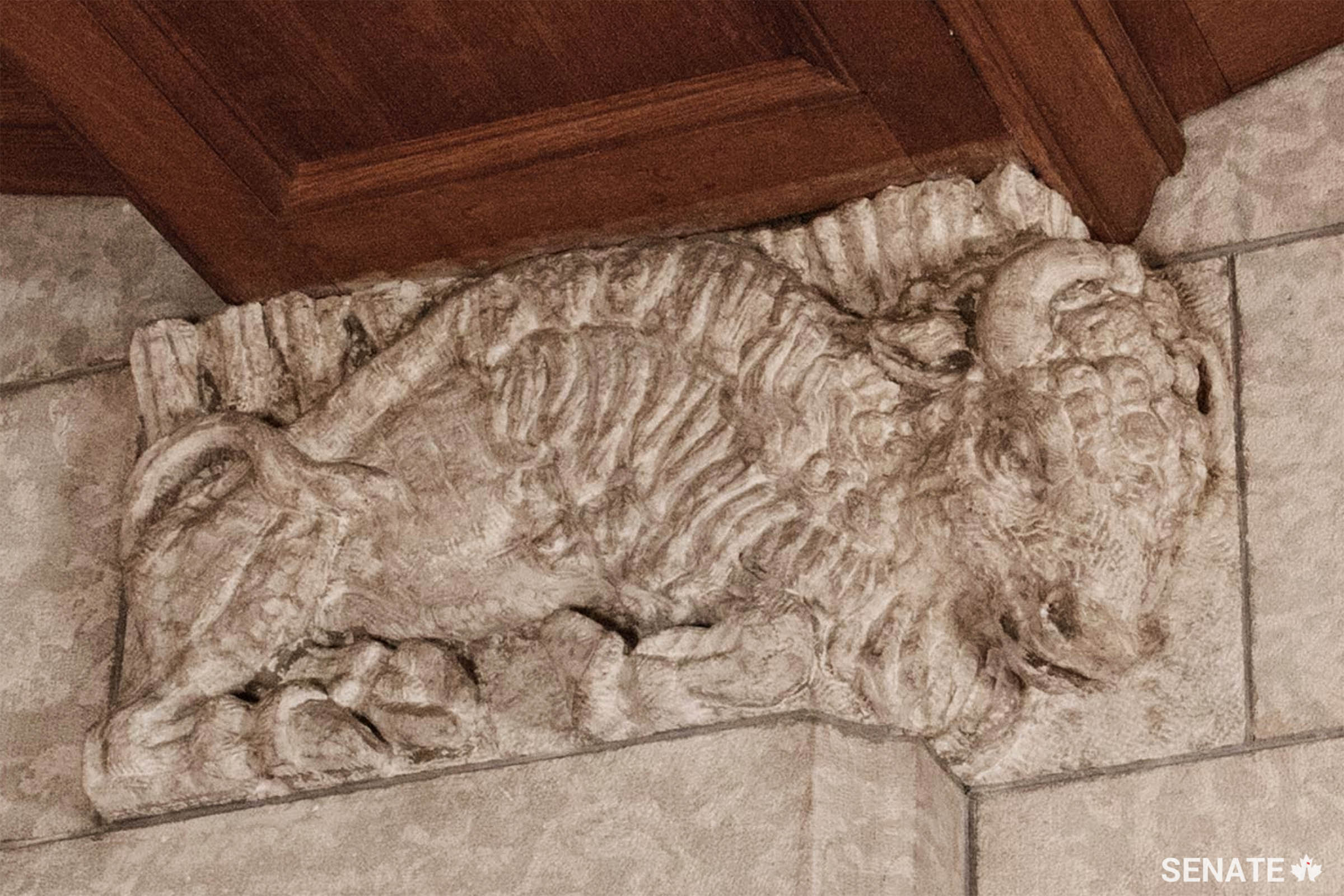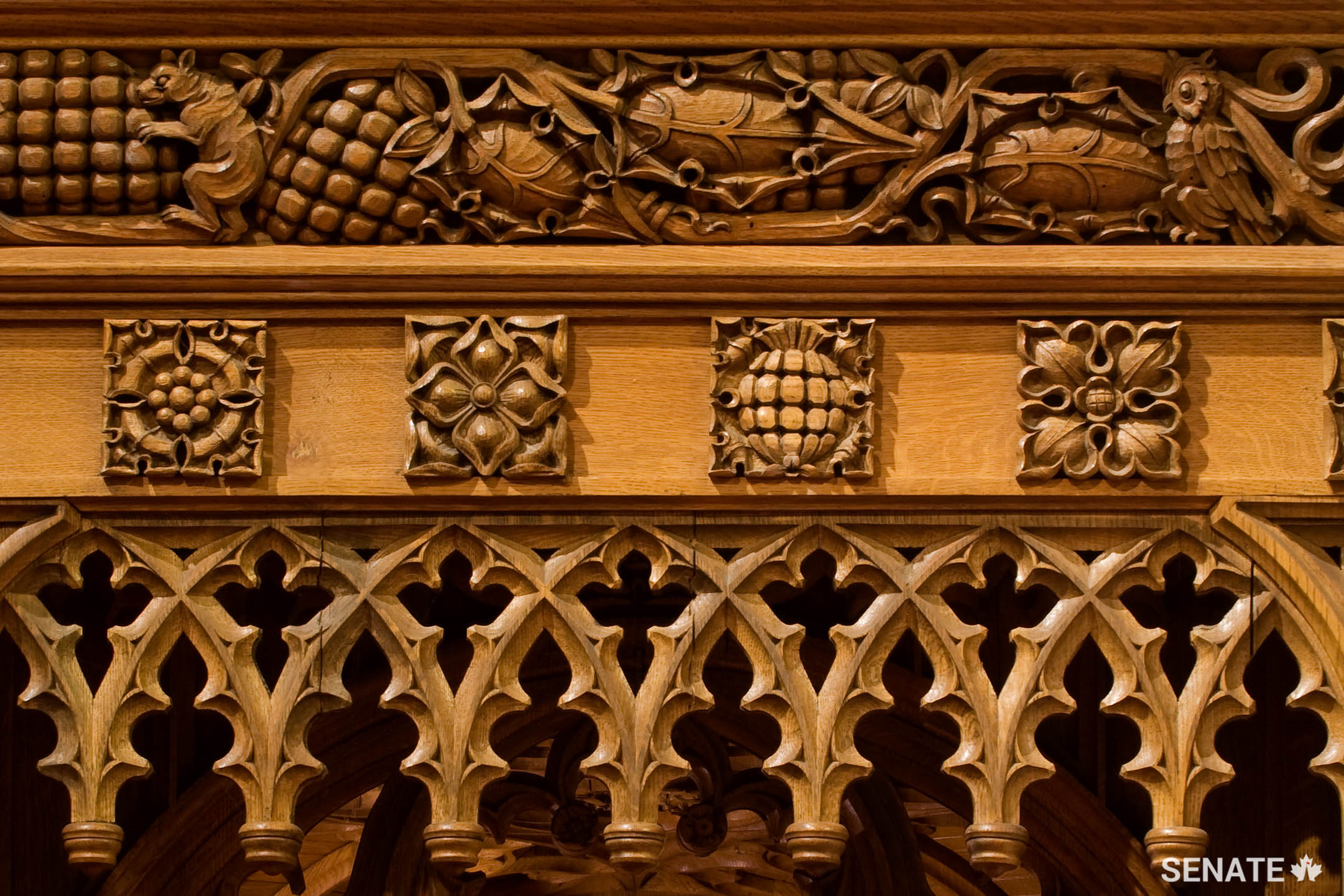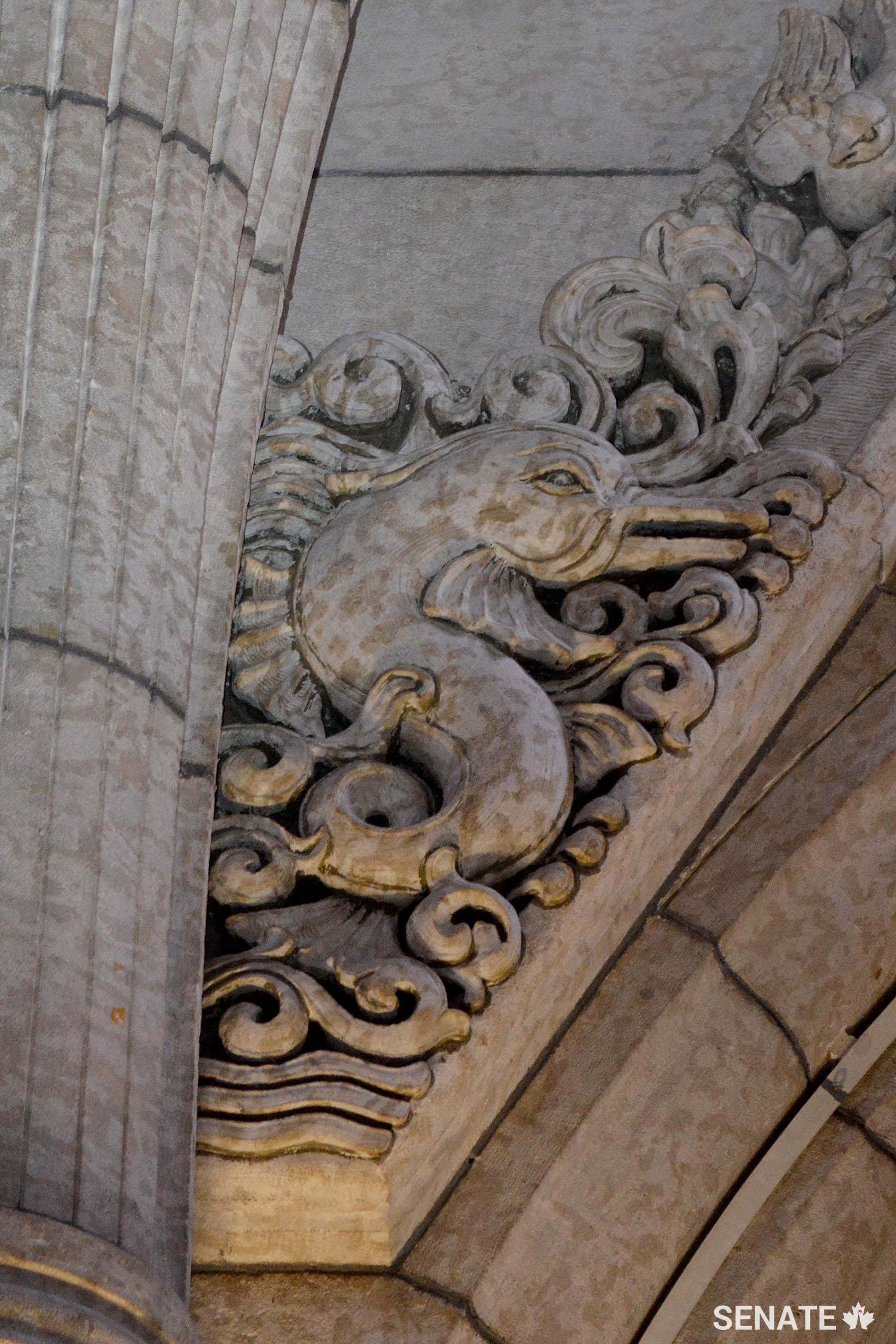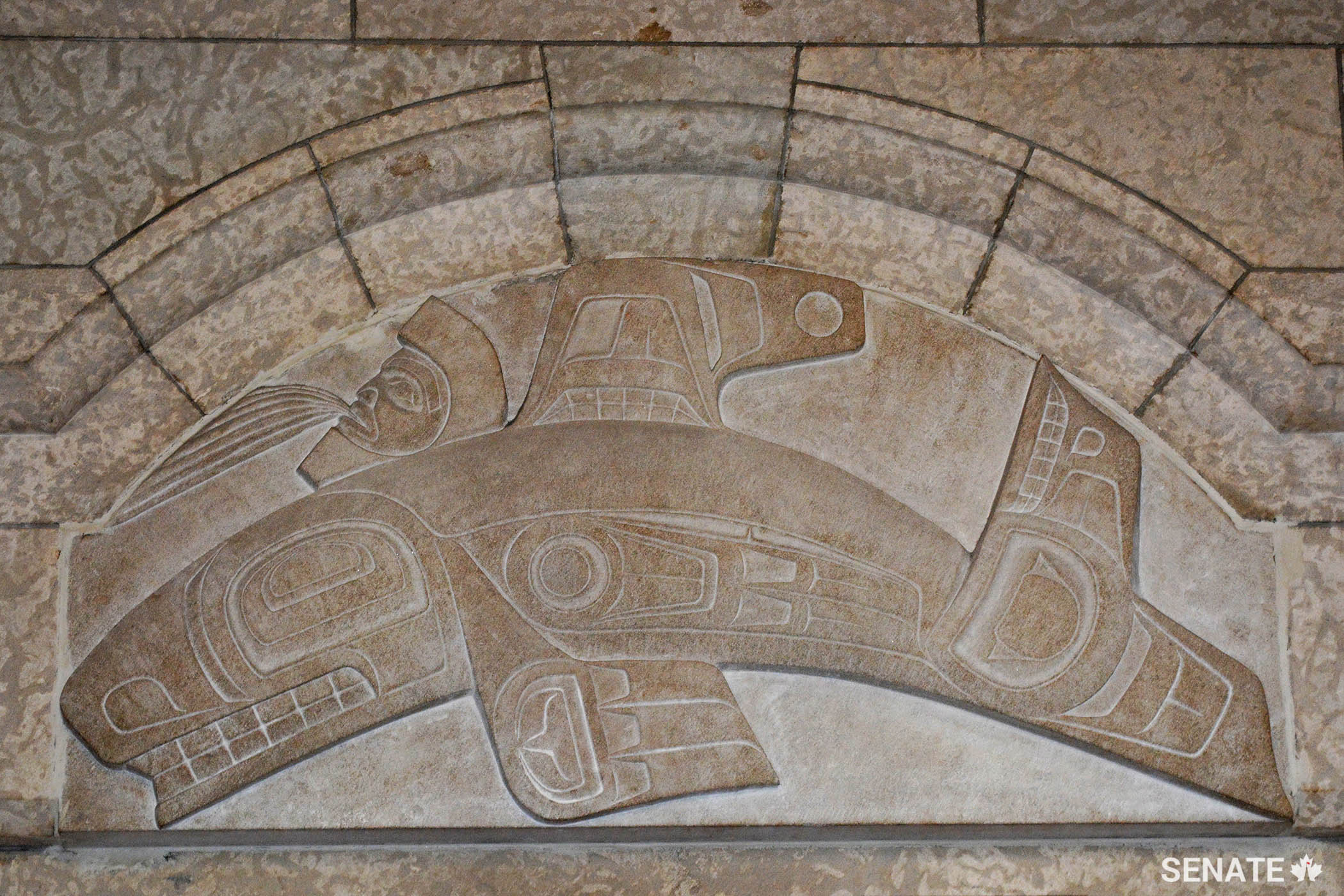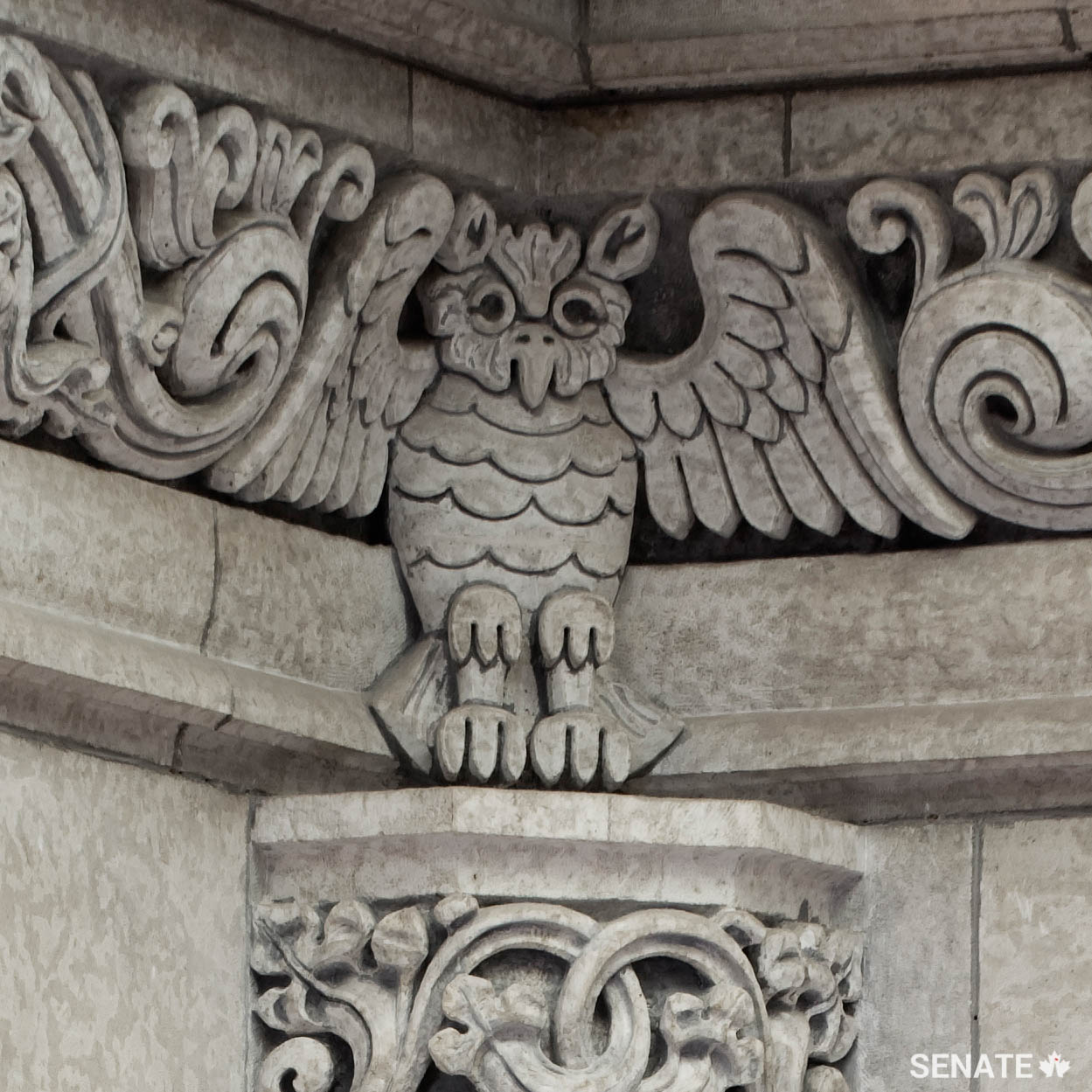Where the wild things are: animal sculpture in Centre Block

Beavers stand sentinel above entranceways. Moose and muskoxen crouch over dormers. Owls and herons flit across gables.
Parliament Hill’s Centre Block exudes a medieval grandeur. But look closer; the building is crammed with whimsical carvings of Canadian animals running amok. The building’s architectural foundations rest firmly on centuries-old European traditions but its decorative stonework channels the ambitious spirit of 20th-century Canada.
A striking example is the beaver over the Peace Tower entranceway. The sculpture was controversial when sketches were made public in 1937. Designer Cléophas Soucy had proposed a mother beaver nursing nine cubs, representing each of the provinces at the time.
Newspapers scoffed at the blunder — beavers bear litters of up to three kits, never as many as nine. Soucy was pressured to revise his design. His solution — a single beaver supporting a shield bearing emblems of Canada’s founding European cultures — was unveiled in 1938.
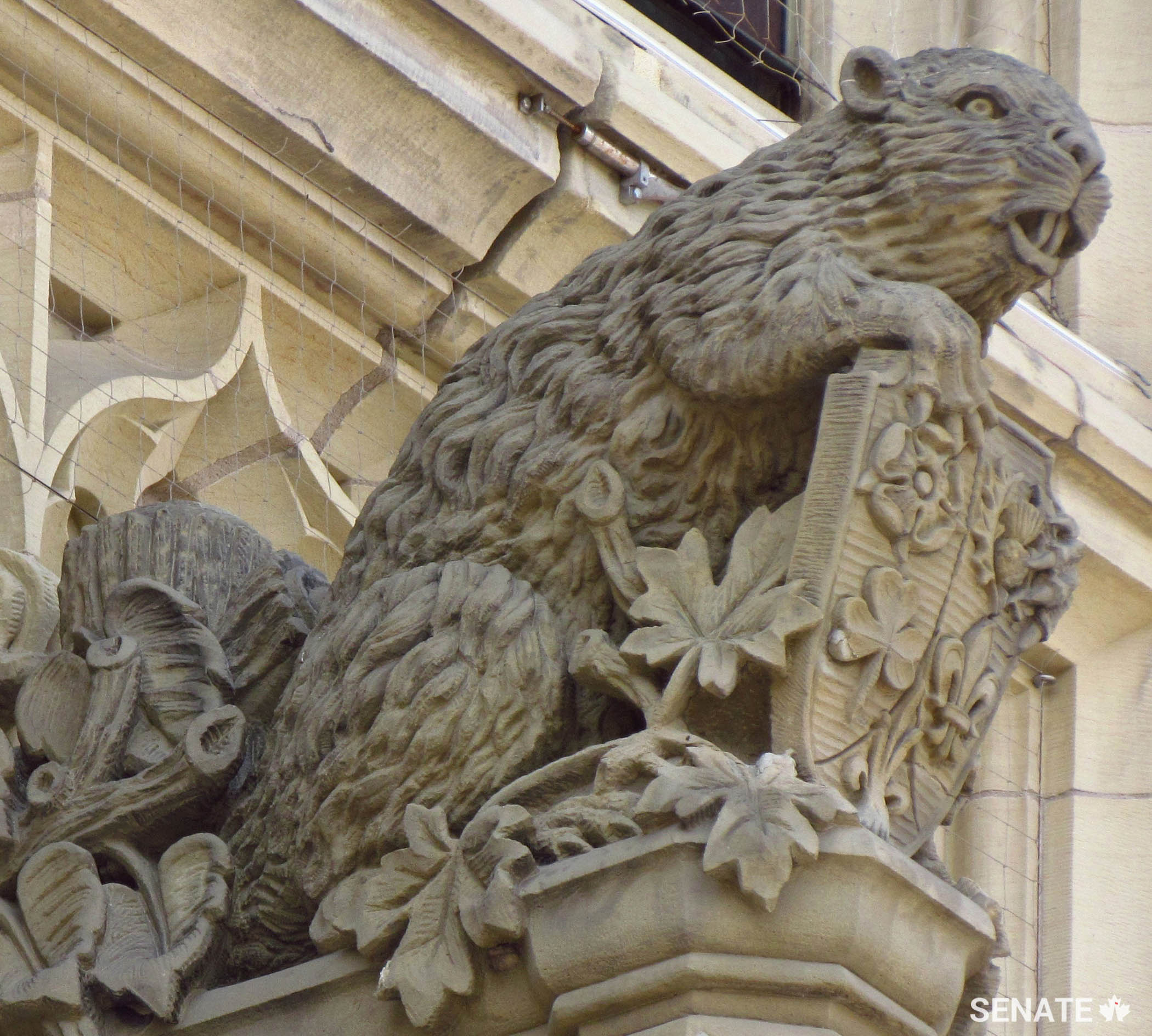
The animal theme continues in panels at the base of the tower, featuring owls, frogs and snails. Continue through the entrance into Centre Block and a wilder menagerie greets you.
Confederation Hall, Centre Block’s grand foyer, strikes a nautical theme, reinforced by wave and compass motifs. Salmon, trout, lobsters and herons cavorting across the foyer’s arches play to this theme. Two dolphins, carved to look like sea monsters on a 16th-century explorer’s map, adorn the east wall.
In the building’s east end, stern owls peer down from high in the Senate foyer. Just before the entrance to the Senate chamber, a muskox, a bison, a ram and a moose sit atop pilasters on the wall of the antechamber as if supporting the oak roof with their sheer bulk.
Like many civic buildings of the 19th century, Parliament’s design is grounded in the Gothic Revival, a Victorian-era movement that revived the graceful architecture of the Middle Ages.
The first Parliament Hill sculptors apprenticed in Europe, restoring its cathedrals. Their work — Gothic Revival in its purest form — features prominently in the East and West Block buildings. Over time, their successors began to challenge this traditional approach.
The turning point came during the First World War, when the sacrifice of Canadian soldiers lit a spark of Canadian nationalism.
When the original Centre Block burned in 1916, its rebuilding presented an opportunity for a new generation of sculptors to carve out a unique Canadian identity. The proliferation of Canadian motifs in Centre Block’s stonework reflects the country’s increasing self-confidence. The result — a uniquely Canadian fusion of Old World tradition and New World swagger — has been dubbed “Canadian Gothic.”
